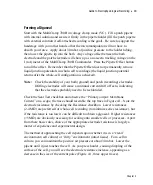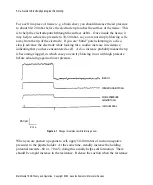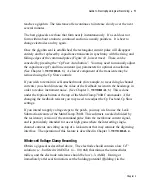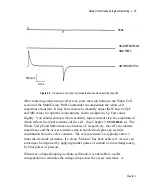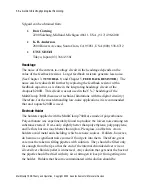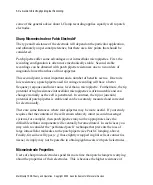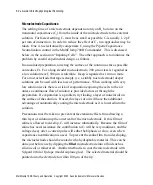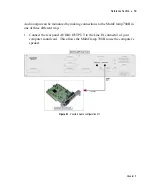
Guide to Electrophysiological Recording
•
63
Tip Potentials
During the passage of current, a slowly changing voltage may be generated at the tip
of a microelectrode. Changes in this tip potential are indistinguishable from changes
in the membrane potential and can therefore be a serious source of error.
Identifying Tip Potentials
•
While the microelectrode is outside the cell, press the Pipette Offset
button to zero the offset. In IC mode, pass a constant current into the
bath for about 10 seconds; this can be done by setting a Holding current
in the MultiClamp 700B Commander and checking the Holding
checkbox. The current magnitude should be the same as the maximum
sustained current likely to be passed during the experiment. When the
current is switched off the recorded potential should return to zero
within a few milliseconds at most. Some microelectrodes either return
very slowly to zero potential, or not at all. These micropipettes should
be discarded.
•
While the experiment is in progress, occasionally check the resistance
of the microelectrode. Changes in tip potential are usually
accompanied by changes in microelectrode resistance.
Preventing Tip Potentials
Not much can be done to prevent tip potentials from changing but the
following may be helpful.
•
Sometimes the slow changes in tip potentials are worse when a AgCl
pellet is used instead of a Ag/AgCl wire. Some holders are acceptable
while other, ostensibly identical, holders are not. Therefore holders
should be tested and selected.
•
The variability of the tip potentials may be related to pressure
developed when the microelectrode is pressed into an unvented holder.
Chapter 4

